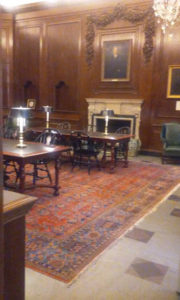
Yesterday, we had a beautiful fall day and the change in temperature was such a welcome relief from summer’s heat. I remarked to a passerby how delightfully cool the morning breeze felt and our brief conversation about the weather turned to his place of origin, Trinidad and Tobago. I mentioned my family was indentured in Barbados in the 1700’s and that I’ve traveled to Grenada several times and love the island. The gentleman laughed and said his mother was from Grenada and his father from Barbados. Such a small world!
Then I listened to an interesting podcast, Sarah Gray Cary From Boston to Grenada that I highly recommend.
Don’t you just love reading old family letters? I certainly do! We don’t often think about all the valuable information that an old letter contains. Primary sources, names, places, dates and events that are recorded can provide us with clues to find other historical records, such as wills, journals, diaries, passenger lists and perhaps, even more letters.
The podcast discusses letters written by Bostonian Sarah Gray Cary who had relocated to Grenada in the Caribbean. Grenada has had an interesting history as it went from French to British ownership. The letters were written at the start of the American Revolution as Sarah took the last ship out of Boston after the tea party to join her husband who had taken a job on the island. She left behind her infant son due to the hardship of the trip thinking they would be reunited soon. Due to war, however, they did not see each other again for 10 years.
The letters are Sarah’s only way to connect with her child and other family members. Not only must she persevere over the unexpected length of her separation, she must learn to embrace three cultures.
After listening to the podcast, I plan on getting the book to read this fascinating true life story. Enjoy!

